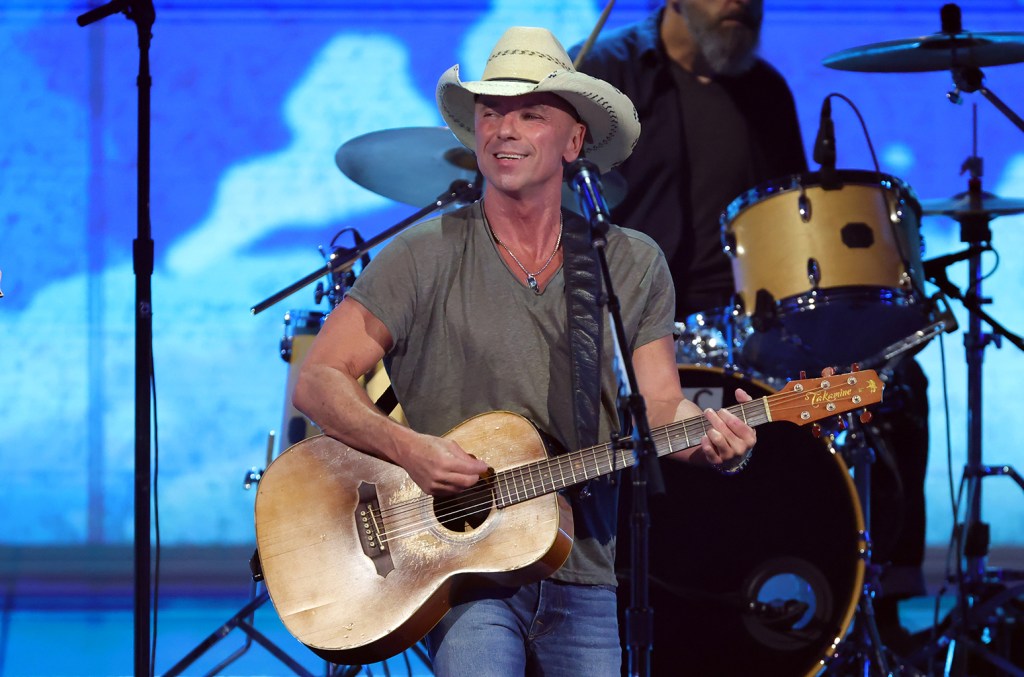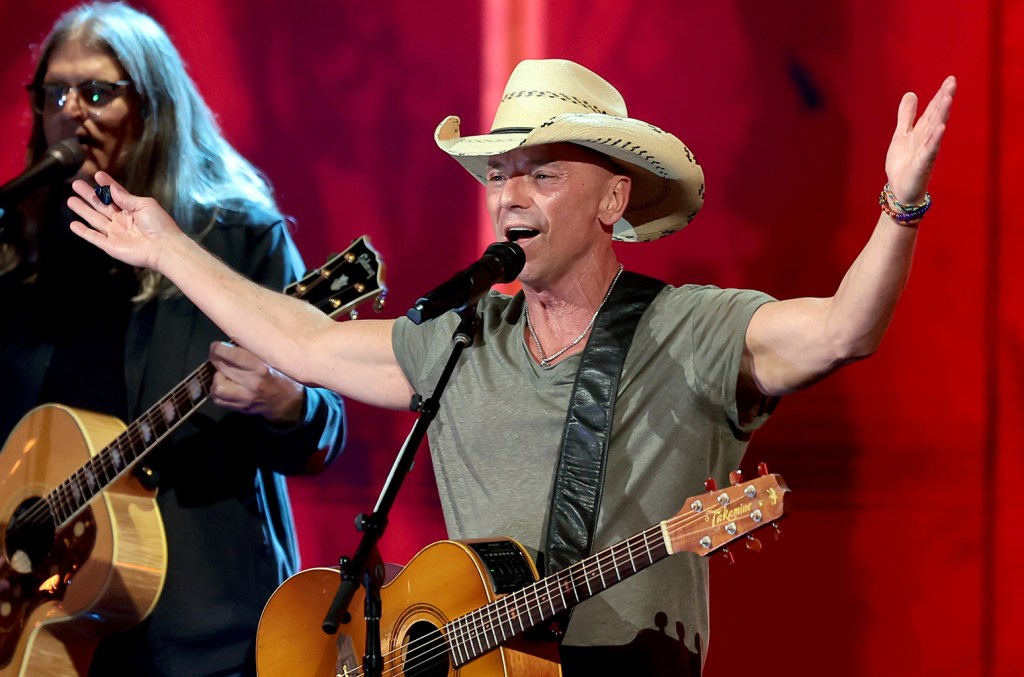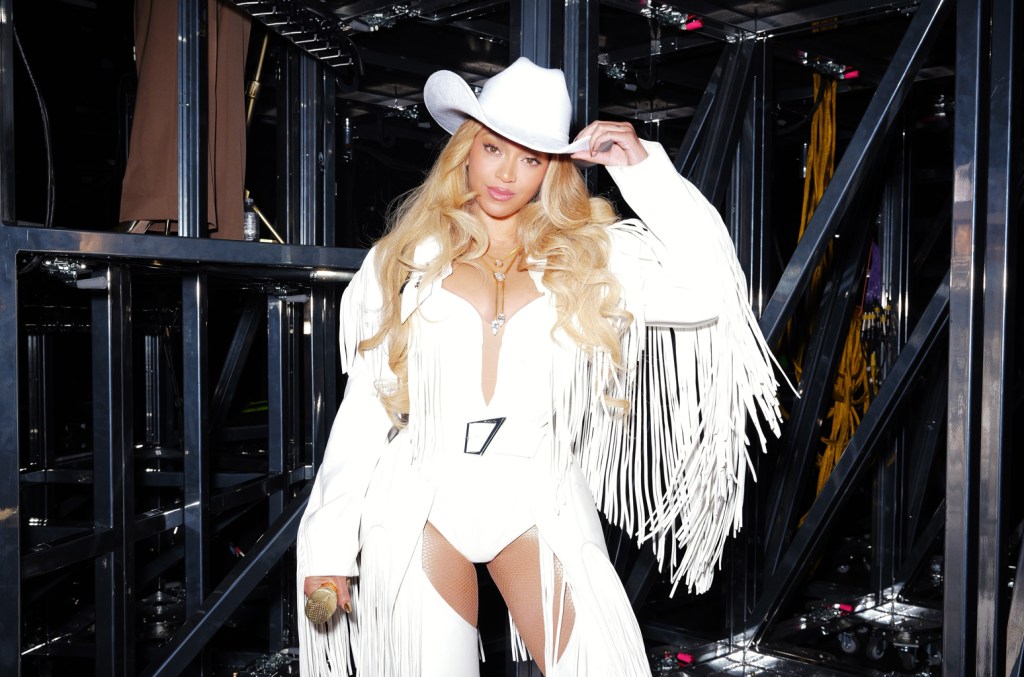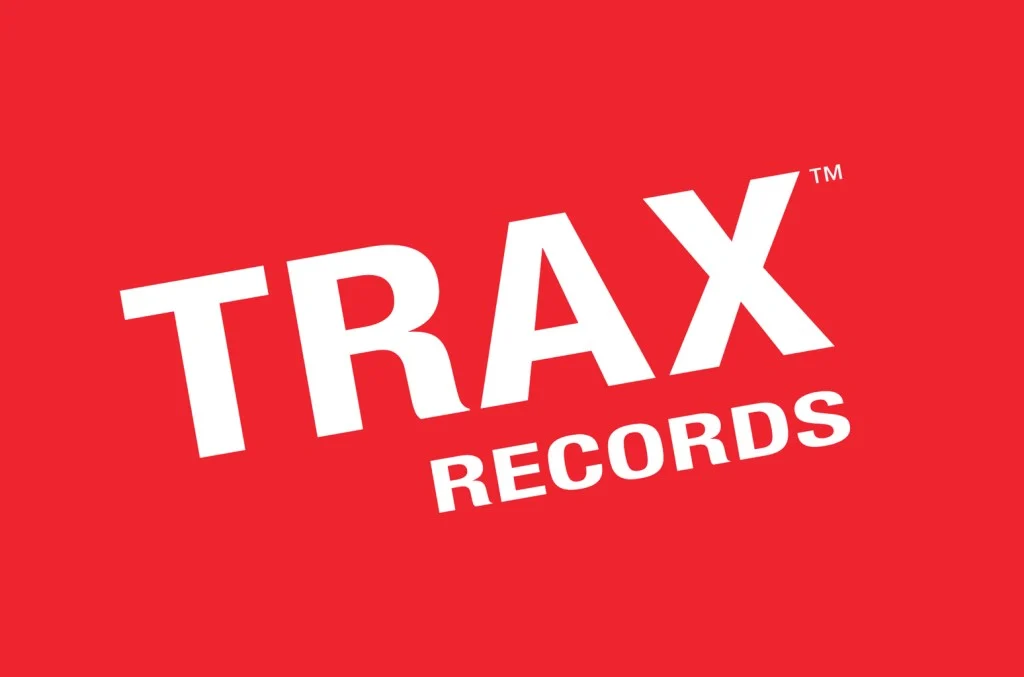Music
Page: 231

As the original Angelica Schuyler in Hamilton, Renée Elise Goldsberry got to embrace pop diva fierceness onstage eight times a week — and won a Tony Award in the process.
Explore
Explore
See latest videos, charts and news
See latest videos, charts and news
The actress, who also won a Grammy when the Hamilton original Broadway cast recording took home best musical theater album, has kept busy since — notably as the hilariously over-the-top girl group alum Wickie on Peacock/Netflix musical comedy series Girls5Eva — but she’s now stepping into the spotlight in a new way: with her independently-released debut album, Who I Really Am, out June 6. It’s mostly written by Goldsberry herself, with the notable exception of “Satisfied,” her personal eleven-o-clock number from Hamilton. “I think the song becomes a lovely bridge from how you know me as a recording artist to the rest of my music as a recording artist,” Goldsberry tells Billboard. What always felt like a “deer in the headlights” moment during the show, she says, became less scary knowing the ensemble was still around her — and placed in the new context of the album, her backup vocalists and band have taken on that role.
Ahead of the reimagined “Satisfied” release today, Goldsberry spoke to Billboard about her evolving relationship to the number that required her to both belt and rap, and the surprising way that tapping into her Girls5Eva character helped her take on this new version.
Trending on Billboard
Renée Elise Goldsberry in Hamilton.
Courtesy of Hamilton On Broadway
How did learning and performing “Satisfied” as much as you have help you grow as a vocalist and performer overall?
What’s most virtuosic about it is the speed of the rap – but that was always very natural for me. It’s so well-constructed, it makes so much sense. I understood immediately the way [Angelica’s] brain works, how someone that smart and passionate can make a decision that’s that complex in an instant.
What was challenging for me was singing through the emotion that holds so much sacrifice at the end of the song. Signing that live was the thing that was so frightening – Will i be able to make sound at the end of this, when I have to act on the decision I just made? The album single version of this song continues to grow – it doesn’t drop back down into vulnerability, it just keeps driving, and that’s a lovely evolution for me in it.You did so much of the writing yourself on this album; I presume it took a lot of thought to decide what to include that wasn’t by you. Why did this feel important to have in the mix?
In 2020, we were promoting Hamilton on Disney+ — and at the exact same time I was writing this album, and the last thing on my mind would have been to include a song I didn’t write, even the song I’m most famous for singing. So it’s so funny to come full circle and be so proud of having this track on the album. What Hamilton has turned into is something that belongs to everyone, and everyone I think knows it better than me now. So it’s a wonderful thing to feel it separate from the show — and when I finally had the courage to share it with Lin and he also liked it, that was the sign-off I needed. Why was it scary to present it to him? I’m not a huge believer in remaking things that are perfect. Luther Vandross can remake anybody’s song, Whitney Houston did a really good job with “I Will Always Love You” — but unless you’re comin’ like that, I think you should leave well enough alone. [Laughs.] I didn’t do it to improve upon it; I just found a way for it to live outside of a perfect show.
Renée Elise Goldsberry, “Satisfied”
Courtesy Photo
How has your relationship to performing it changed over the years? At this point it must feel a little like the hit everyone wants a pop star to perform in concert, even if they occasionally need a break from it….
In the very beginning, I said: “If for the rest of my life when I walk out, somebody plays this song, I’ll be thrilled.” And then what you’re saying is also true; we have an interesting relationship with the things we owe the most to in terms of our career. At some point, we want to prove we can do something else — so there might be a stage where we’re trying to be defined as something different, and then we full circle land on gratitude.
It’s funny that it’s only been ten years — but I’m already full circle grateful. I don’t feel like it’s in any way diminishing, like, “This is your one thing.” It’s such a gift, and also there’s so much challenge in it, so much to discover, it will never feel too small for me. As a big Girls5Eva fan, I have to ask: Do you see any ways in which playing Wickie helped you on this album? Does tapping into her energy help you diva out?
At this very moment, something just became very clear for me: the alter ego of a Sasha Fierce…even in Girls5Eva, Dawn has this Fledge Mulholland alter ego so this mom and wife can feel as powerful as she did onstage. And I just realized Wickie is mine.
There are a lot of things about her I don’t take into my life — but the unapologetic ambition is critical, especially when you’re doing something that no one asked you to do. No one asked me, “Who are you really, Renée?” I just chose to answer it, and Wickie would do that — and she’d do it bravely and with a very unique sense of style! And she’s the Energizer Bunny — she never ever stops trying to move forward, and I need a little bit of that. I have so many more stories to tell.

On Friday (May 23), 13 artists were presented with iHeartRadio Titanium Awards for reaching 1 billion spins of their songs across iHeartRadio stations in 2025 — and Billboard can exclusively reveal the new honorees. Artists that reached the milestone include: Benson Boone with “Beautiful Things”; David Guetta and Bebe Rexha with “I’m Good (Blue)”; Doja […]
With 33 Country Airplay No. 1s to his name, Kenny Chesney could fill an entire concert—and then some—with only chart toppers. But Thursday night (May 22) at the opening night of his Sphere residency in Las Vegas, he dug deep into his nearly 30 year-catalog. Chesney’s reputation as a stellar live performer is well established: […]
Las Vegas may be landlocked, but Kenny Chesney took fans to the beach Thursday night (May 22) in the opening night of his 15-date Sphere run.
The four-time Country Music Association Awards entertainer of the year, the first country artist to play the immersive venue, is one of the most celebrated live performers in any genre and he showed once again why during the two-hour and 15-minute concert. During the fun and breezy 27-song set, many songs celebrated the island lifestyle that embodies the spirit of Chesney’s No Shoes Nation.
According to Billboard Boxscore, Chesney is the only country artist to reach $1 billion in concert grosses reported to Billboard. His passionate No Shoes Nation fanbase has followed him into stadiums, which he has filled for 20 years, so to see him in the 18,000-seat Sphere is a chance to view him relatively close up (despite the crazy steep pitch of the four levels).
Throughout the show, Chesney exhibited a welcome spirit of gratitude for his fans, excitement over his first Las Vegas residency (no starting small for him), and elation at being back on stage, noting this was his first show of 2025. As anyone who’s seen one of his stadium shows knows, Chesney thrives on contact with prosceniums that extend far out into audience. The Sphere doesn’t allow that, so he had to make do with occasionally palm slapping with fans standing in the front section, dubbed The Sandbar, but he still managed to fully connect with the crowd.
Chesney, who was inducted into the Country Music Hall of Fame in March, has logged 33 No. 1 hits on Billboard’s Country Airplay chart, which is more than any other artist since the chart launched in 1990. He landed his first No. 1 in 1997 with “She’s Got It All,” and most recently topped the chart last year with “Take Her Home.” In between have been such hits as “The Good Stuff,” “Living in Fast Forward,” “Don’t Blink,” “American Kids,” “Better as a Memory” and “No Shoes, No Shirt, No Problem.”
So, it’s no surprise that the show relied heavily on hits (heck, he could have played nothing but his No. 1s and still had the show go longer than two hours), but he also trotted out deeper cuts and lesser performed tunes to create a one-of-a-kind show.
Chesney’s residency lasts through June 21 and tallies 15 dates.
Billboard was at Sphere for opening night, and we’ve rounded up the best moments of the evening.
This Is Not a Dark Ride
Morgan Wallen returns to No. 1 on the ARIA Albums Chart this week with his sprawling 37-track effort I’m the Problem, marking his second Australian chart-topper following One Thing at a Time, which spent two weeks at No. 1 in 2023. Explore Explore See latest videos, charts and news See latest videos, charts and news […]
Miley Cyrus brought raw vulnerability to Jimmy Kimmel Live! on Thursday (May 22), performing her latest single “More to Lose” in a striking, emotionally-charged moment on the late-night stage.
Explore
Explore
See latest videos, charts and news
See latest videos, charts and news
Wearing a dark hooded coat and surrounded by a live band and string ensemble, the Grammy winner delivered a stirring rendition of the song beneath dramatic spotlights, echoing the somber, cinematic visuals from the track’s music video released earlier this month.
“On a song like ‘More to Lose,’ I try to keep it a singular take,” Cyrus previously explained in a video shared to Instagram. “I add my harmonies, ad-libs at the end, but it’s really a song that’s more of a story and I never want that to be interrupted or overthought or chasing perfection.”
Trending on Billboard
“I never wanted More to Lose to feel perfect, I wanted it to sound meaningful and emotional,” she added.
The performance arrives just one week before the release of Something Beautiful, Cyrus’ highly anticipated ninth studio album, due May 30. The record is led by “More to Lose,” April’s “End of the World,” and recent tracks “Prelude” and the album’s title track. It also features collaborations with Naomi Campbell and Brittany Howard.
The pop star is set to debut a visual album companion to Something Beautiful at the Tribeca Film Festival on June 6. Described as “a one-of-a-kind pop opera,” the film is directed by Cyrus with Jacob Bixenman and Brendan Walter.
In a recent interview with Apple Music 1’s Zane Lowe, Cyrus reflected on her journey to self-acceptance and sobriety — and how it shaped this new creative era. “The sobriety is like, that’s like my God. I need it, I live for it,” she said. “It’s changed my entire life.” Her 2023 smash “Flowers,” which earned her her first-ever Grammys, served as the breakthrough. “It was some sort of key right into the lock of all healing,” she added.
With Something Beautiful, Cyrus continues that journey — and if “More to Lose” is any indication, she’s not shying away from the parts that hurt.
Rob Thomas is making his return Down Under. The Matchbox Twenty frontman will head to Australia and New Zealand this October and November for a headline solo tour in celebration of his forthcoming album All Night Days and the 20th anniversary of his 2005 debut solo album …Something to Be. Explore Explore See latest videos, […]
Joe Jonas released his long-awaited sophomore solo album, Music For People Who Believe in Love, on Friday (May 23) via Republic Records. Preceded by singles “Work It Out,” “What This Could Be” and “Heart By Heart,” the studio set arrives nearly a decade and a half after the Jonas Brothers heartthrob’s first solo offering with […]
“I said, they NEVER take the country out me!” Beyoncé bellowed in the misty night sky on Thursday (May 22) — repeating a lyric from “Formation” for emphasis, and also presenting the main idea of her sprawling Cowboy Carter tour, which made its way to New Jersey’s MetLife Stadium for the first of a five-night […]
Trax Records is releasing a hefty compilation project next month as part of the label’s ongoing 40-year-anniversary celebrations.
Out digitally and on vinyl on June 20, Trax Records: The 40th Anniversary Collection features singles and remixes by house pioneers including Frankie Knuckles, Marshall Jefferson, Ron Carroll, Frankie Bones and Joey Beltram, along with work by the label’s late founder Larry Sherman and its longtime owner/president Rachael Cain, who has long made music under the name Screamin Rachael.
The project was curated by the label’s creative director Jorge Cruz, who’s been with Trax since 2009. Cruz will play as part of a release party for the project happening at Chicago’s Reckless Records on June 20. Beyond Cruz’s set focused on the history of Trax, the event will feature sets by Joe Smooth, Ron Carroll, Screamin’ Rachael and more.
The project will also be available for purchase via limited-edition vinyl drops. On June 20, the first batch of songs of the compilation’s 40 total tracks will be released, with subsequent vinyl releases each containing six to seven tracks to maximize sound quality and happening through January 2026. Vinyl will be available at record stores worldwide.
Trending on Billboard
The Trax plant opened in Chicago in 1984, with the label business becoming officially incorporated the following year, amid the dawn of house music, with Trax widely recognized as a crucial early hub for evolution and dissemination of the genre. In its early years, the label released key house tracks, including Frankie Knuckles and Jamie Principle’s “Your Love,” Marshall Jefferson’s “The House Music Anthem (Move Your Body)” and many other genre-defining classics by artists like DJ Pierre, Ron Hardy, Mr. Fingers, Phuture, Maurice Joshua and Screamin’ Rachael.
The label also recently announced the release of its first vinyl release in more than a decade, Rising Again, a six-track compilation that’s out now.
Trax Records: The 40th Anniversary Collection track list
Jacques x Gregory feat. Screamin’ Rachael – “I’ll Take You There (Full Journey Mix)”Willie Wonka – “What Is House”Frankie Knuckles – “Your Love”Marshall Jefferson – “Move Your Body”Stylophonic – “Jack It Up”Armando – “Love In Heart”Mark Row, Jame Starck feat. Carol Jiani, “Free Your Mind’Paul Johnson – “Follow This Beat”Screamin’ Rachael – “Rising (Lea Rognoni Remix)”Fuck Charley Pleasure Zone – “House Nation”Yuri Suzuki – “DATA MANIA”D Beat – “Pump It (Lea Rognoni Remix)”Sir Nesis- “Freaks (So Called Friend Remix)”Frankie Bones – “Beat Me Up”Joey Beltram – “The Start It Up”Ricky Dillard – “As Always (Full Vocal Version)”Marshall Jefferson – “Ride The Rhythm (Remix)”Owen E – “Shift”Analog 87 – “rOOmclaSSic”Jorge, Carmelo Carone – “Jack the Acid Kid (Hiroko Yamamura & Eric Elvambuena Remix)”Phuture – “Spank Spank (Original Mix)”Screamin’ Rachael – “Gina (XXX) [Someone from Lithuania with a Friend Named Jorge Remix]”Jared – “Fly So High (Roger Sanchez Tilt Mix)”Hercules – “7 Ways to Jack”Ron Carroll – “1993 the Bargin Enterprize”Luca Gerlin – “Battery (Kkles Mix)”Jesse Velez – “Girls Out On The Floor (Dub)”Camilo Do Santos – “1984”Samurai Sam – “House of Japanese”David Chong – “There Is No Place”Frankie Knuckles – “Your Love (You Got The Love Remix)”Seph Martin – “Rainy Nights”Larry Sherman – “Colors”Miss Autumn Leaves – “No Turning Back”Late Nite ‘DUB’ Addict – “The ‘F’ Word”Carlos Nilmmns feat. Genoveva – “Fade Out (Original Mix)”Ron Hardy – “Liquid Love (Chicago Mix)”Screamin’ Rachael – “Sensation (Zewmob Radio Edit)”Chris Jones – “Strong2 (Dance Mix)”Screamin’ Rachael – “My Main Man”

 State Champ Radio
State Champ Radio 






